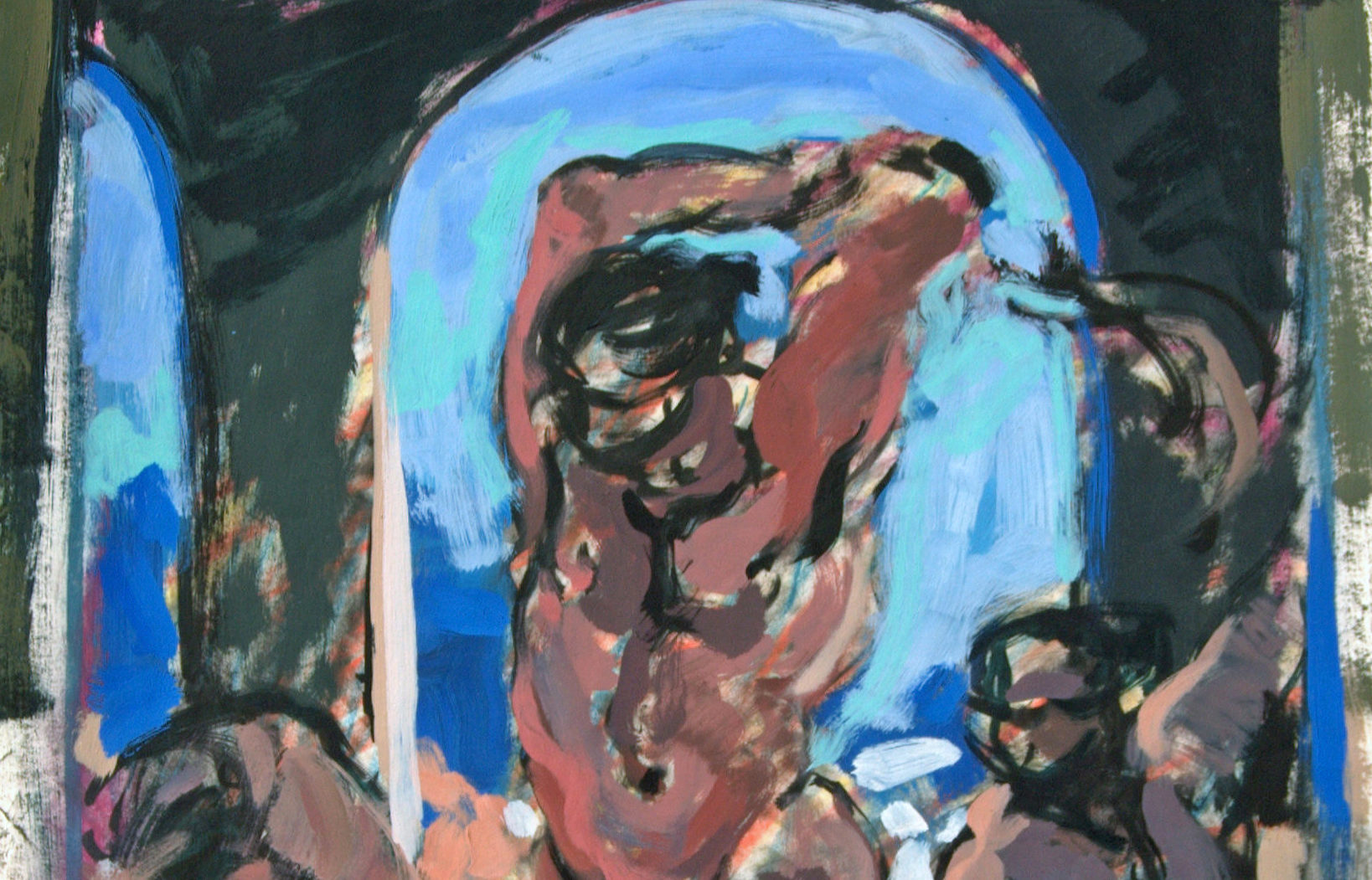The moral philosophy of St. Thomas Aquinas (1225-1274) involves a merger of at least two apparently disparate traditions: Aristotelian eudaimonism and Christian theology. On the one hand, Aquinas follows Aristotle in thinking that an act is good or bad depending on whether it contributes to or deters us from our proper human end—the telos or final goal at which all human actions aim. That telos is eudaimonia, or happiness, where “happiness” is understood in terms of completion, perfection, or well-being. Achieving happiness, however, requires a range of intellectual and moral virtues that enable us to understand the nature of happiness and motivate us to seek it in a reliable and consistent way.
In Essay One of this Just War 101 series, I observed that Thomas Aquinas is a—I suggested the—key figure in the development of the just war tradition, most especially in the tradition’s Christian realist stream that I am expounding here. In terms of the chronological development, and here I’m following James Turner Johnson, Aquinas is something of a hinge figure. First, he summarizes the wealth and long history of classical and Christian reflection on the ethics of war that preceded him, most especially Augustinian thought on Christian moral and political responsibility. Secondly, Aquinas himself becomes a key reference point for later just war thinkers, both Catholic and Protestant as well as influential figures in international law. Beyond his pivotal place in the tradition’s timeline, Aquinas articulated a number of key ideas that would animate and sustain a Christian realist understanding of just war through to the present day.
In this final introductory essay before launching into examination of the constituent bits of the just war framework itself, I want to make note of several of Aquinas’ important conceptual contributions. I am not suggesting these ideas appear in Aquinas alone—or even that they originated with him. Most do not. But the ideas are consolidated and illuminated within Thomistic thought in ways that guide our own reflection on just war.
First, I’ve already noted in the opening essay the significance of Aquinas positioning his discussion of war in the Summa Theologica within his larger discussion of love. In Essay 2, I insisted that appreciating how the just war tradition is grounded in love is essential in understanding the tradition’s basic moral logic and for grasping that fighting a just war is not an exception to the law of love, but, rather, an expression of it.
That fighting a just war in defense of innocent victims under unjust assault can be an expression of love for them is obvious. But, following Augustine, Aquinas insists that fighting just wars must also be an expression of love for the enemy we are fighting. Just how this can work can perhaps be best understood through observing how Thomas views human happiness.
In the Thomistic view, the just war tradition—indeed, the whole of Thomistic moral theology—is grounded in the merger of a classical understanding of eudaimonia and Hebraic theology. Taking his cue from Aristotle, Aquinas judges an act to be good or bad in so far as it promotes or detracts from our proper human end—the telos, or aim, for which human beings were made. The proper human end points, in a word, to eudaimonia, flourishing, or happiness. Human beings were made to be happy. Of course, human beings cannot be happy in just any old way. The true end of human being—and of becoming human—is the knowledge and enjoyment of God. This, in turn, is most often characterized through the contemplation and enjoyment of a variety of intellectual and moral virtues that, over time, help form us into the kinds of creatures who exhibit a taste for heaven and a desire to be in the presence of the Holy.
While it may appear that we have veered far from a discussion of enemy love, it is not so. Thomas follows Augustine in understanding enemy love to operate in at least two ways. First, it is manifest in following particular attitudinal prescriptions: we love our enemy when our motivations for fighting him do not involve implacable hatred, a desire to return evil for evil, a desire to see our enemy suffer per se, and when our manner of fighting our enemy does not manifest gratuitous cruelty and the like. Positively, we love our enemy when we “aim for our enemies’” good in order to win them back to peace, and, with that intent, punish them with a “sort of harsh kindness.” Continuing in this Augustinian vein, Aquinas elaborates:
It is necessary sometimes for a man to act . . . for the common good or for the good of those with whom he is fighting. Hence Augustine says, “Those whom we have to punish with kindly severity it is necessary to handle in many ways against their will. For when we are stripping a man of the lawlessness of sin, it is good for him to be vanquished, since nothing is more hopeless than the happiness of sinners, whence arises a guilty impunity and an evil will, like an internal enemy.
With a logic that can only make sense within a deeply religious—possibly only Hebraic—worldview, the argument here is that it is sometimes better to die than to be permitted to continue in wickedness. When talking about soldiers in war, this gets complicated because very often the persons against whom the just warrior is fighting are not hardened ideologues. Not every German soldier was a member of the SS, and there is a generally safe presumption that most soldiers—on either side—would much rather be somewhere else. Nevertheless, the claim here is those who are fighting in an unjust war can be loved when we stop them from participating—willingly or intentionally or not—in an unjust fight.
This emphasis on human flourishing continues when we bring the just warrior himself into view. Just war presumes a particular kind of character—only just warriors will fight just wars with any reliability. The cultivation of the kinds of virtues required to fight just wars justly—even when one is angry, lonely, hungry, exhausted, and terrified out of their wits—adds to our ability to flourish. War may not profit us in the sense that it adds an ounce of treasure to our pockets, but the profit is the acquisition of virtue, manifest in other-centered acts of self-donation.
This idea carries over to the second conceptual contribution Thomas makes. As Johnson puts it, “Aquinas’ conception of just war places the resort to war squarely in the frame of the sovereign’s responsibility for the good of the public order.” As we’ll see, Thomas’ three conditions required for a resort to war to be just include sovereign authority, just cause, and right intent. These will correspond to the three essential political goods as defined in Augustinian political theory: order, justice, and peace. By equating “proper sovereignty” with the political good of “order,” Thomas is demanding of political authority that they use power only for the promotion of justice and peace. Like love itself, power, then, becomes a force for other-centered good. At its heart, this is what bellum (jus ad bellum, just in bello)is all about. Bellum is public force for public good. This contrasts with duellum, or duel, which is force used by public or private authority but only for private good. Just as bellum can be an expression of other-centered love, the duel can only ever be an expression of self-centered love. This is the distinction, in the Augustinian mind, between caritas and cupiditas, or charity and cupidity.
All this to say, in the Thomistic view, just war is a essential tool wielded by the sovereign—the person or persons over whom there is no one greater charged with the care of the political community—in the last resort, when nothing else will protect the innocent, take back what’s been wrongly taken, or punish evil. More will be said on this anon.
Third, Thomas makes an important distinction between moral and ontic, or non-moral, evil. Like Augustine, Thomas understands evil to be a privation—that is, it is the deprivation of something essential to the perfection of a thing. Through the concept of non-moral evil Thomas is pointing to the lack of perfection in the created order—natural disasters, unintentional harm, negative second order consequences, etc. For instance, blindness in a child is an evil because the loss of vision deprives the child of an essential good, or perfection—his bodily wholeness has been compromised. The lack of vision in a rock, however, is not an evil—sight is not essential to the perfection of a rock. This same distinction can be seen in the second essay’s consideration of the surgeon who is compelled to remove the leg of the child suffering gangrene. The removal of the leg results in an evil, the child has been hobbled. However, and this is the critical distinction, the evil that exists in the blindness of a child (presuming no one is to blame) and in the performance of required surgery are non-moral evils. This is to say there is no sin involved. The surgeon who performs the amputation may be causally responsible for the evil, but she is not morally responsible for the evil. Indeed, if she did not perform the required surgery—that is, if she did not perform the harm—then she would be guilty of a moral evil.
This distinction is essential because it allows the business of warfighting a clearer picture of what is happening. Killing another human being always results in an evil—for it results in the loss of the good of life. However, the person doing the killing is not necessarily committing a moral evil. They may be causally responsible for the kill, but they might not be morally responsible. Especially in light of the reality of moral injury, this is a critical insight.
Lastly, this distinction between moral and non-moral evil further funds Thomas’ conception of double effect. This idea observes that the same action can have multiple effects, or outcomes. One of those outcomes might be directly desired. The others might be foreseeable but not desired. Double effect is a mode of moral reflection that allows us to recognize when it is right to do something that is morally licit and necessary even though we know there will be collateral damage that we could not directly do on its own. Obvious examples include killing an especially high-value target about to commit some great evil even though we know that an innocent bystander will be killed, or an ectopic pregnancy in which we perform the necessary surgery to save the mother’s life even though we know that our actions will result in the loss of the child. In each case the former effect—the killing of the enemy and the saving of the mother) is desired and the second effect—the corresponding death of an innocent—is foreseen but not desired. Importantly, the second effect cannot be the means of leading to the first effect. So, in the classic, and rather obnoxious, trolley problem, one cannot throw an innocent bystander in the way of the trolley in order to derail the trolley and save the more numerous lives on the track ahead. That would be using the innocent person as the means to the good end.
Double effect plays a significant role in much deliberation about the ethics of war. It is a conceptual tool that is much maligned for it can be much abused. But in utilizing distinctions between moral and non-moral evil and in understanding the importance of intention, double effect gets at something essential in the whole business of warfighting.
Thomas Aquinas’ role in the tradition of just war reflection is essential. He is historically and conceptually significant and has shaped Christian reflection on warfighting in critical ways.
The concepts briefly introduced here will carry forward in the discussions to come.






